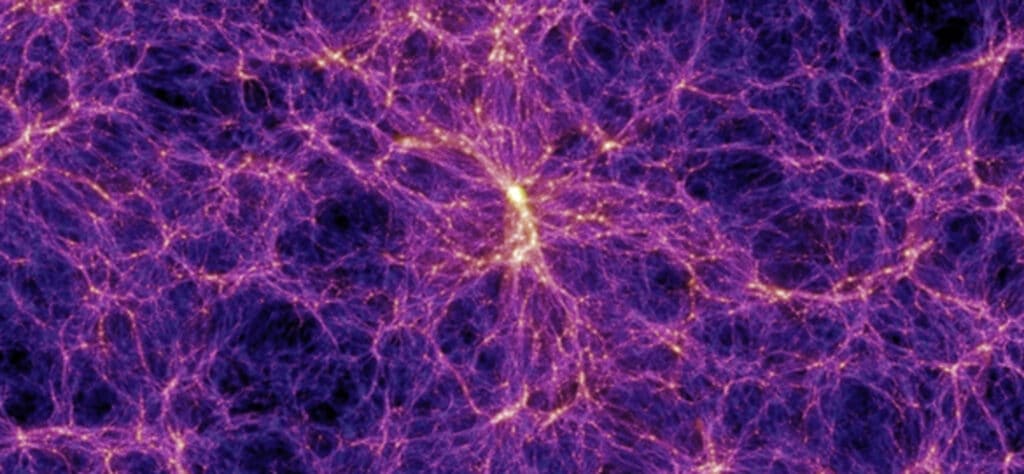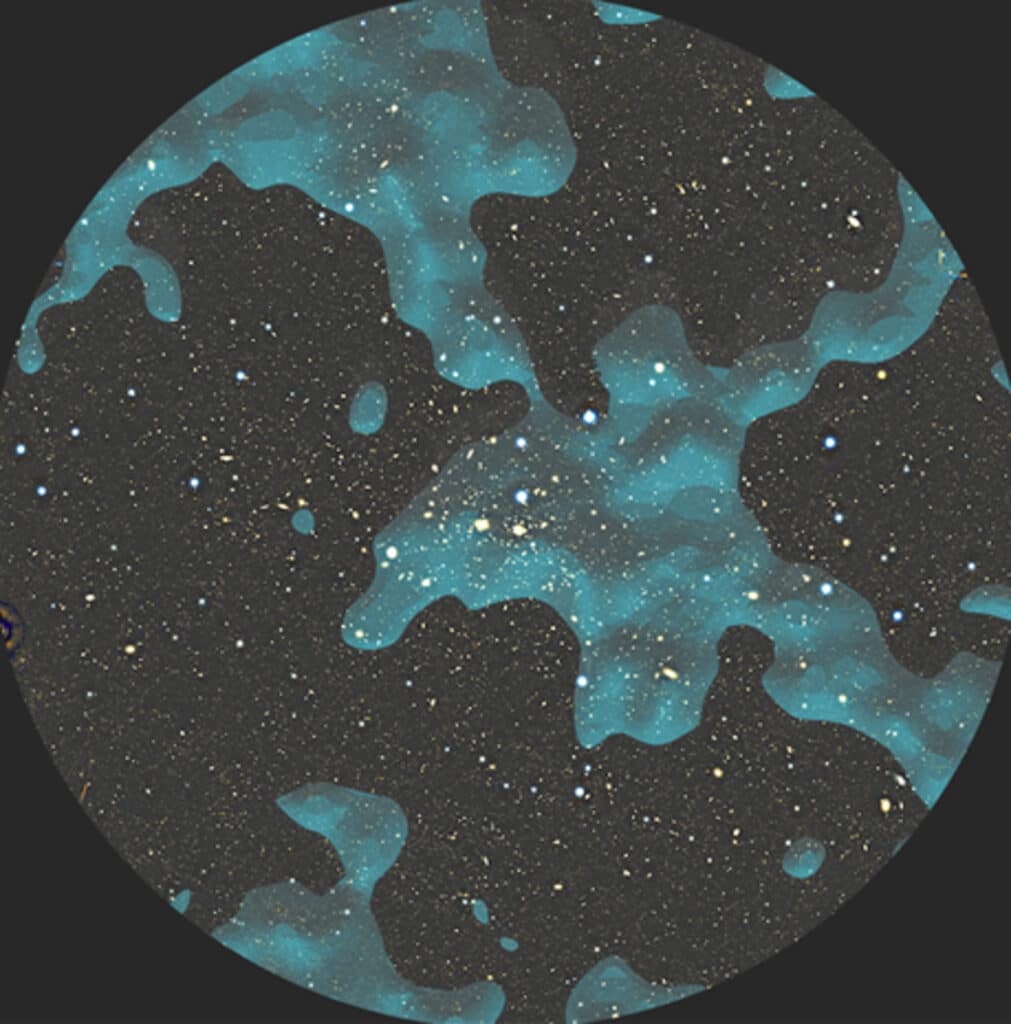An astonishing discovery has changed the way astronomers will forever look at the universe. In a study from Yonsei University, scientists have made history by being the first in the world to directly detect the elusive web-like dark matter filaments that underpin the structure of the universe. This significant achievement, leveraging the technique of gravitational lensing, offers a direct glimpse into the complex scaffolding made of dark matter that has, until now, been a theoretical construct beyond the reach of direct observation.
Dark matter, a mysterious substance that does not emit, absorb, or reflect light, is estimated to make up about 25 percent of the universe. Its presence is inferred from gravitational effects on visible matter, radiation, and the large-scale structure of the universe. Despite its invisibility, dark matter plays a crucial role in the formation and structure of the cosmos, contributing to a cosmic web that connects galaxy clusters across vast distances.
The study, utilizing observations from the Subaru Telescope located at the Mauna Kea Observatories in Hawaii, employs gravitational lensing to reveal the presence of dark matter. Gravitational lensing occurs when the gravity of a foreground object bends the light from a background object, causing the background object to appear distorted. This phenomenon, akin to a cosmic magnifying glass, allows astronomers to detect and measure the mass of dark matter by observing the extent to which it bends the light of distant galaxies.

Astronomers focused on the gravitational lensing effects caused by dark matter filaments extending from the Coma cluster, located approximately 320 million light-years from Earth. Through meticulous analysis of the distorted appearances of hundreds of thousands of galaxies, the researchers confirmed the existence of the dark matter filaments that form the universe’s skeleton.
“Our findings demonstrate, through direct observation, the evolution of the universe’s macrostructure that was previously known only by theory,” says study lead author James Jee, professor in the Department of Astronomy at Yonsei University’s College of Science, in a media release. “We anticipate that our findings will contribute greatly to our understanding of the origins and evolution of the universe as well as validation of standard cosmological theory.”
This direct observation of dark matter filaments marks a monumental step forward in cosmology, providing empirical evidence for the large-scale structure of the universe that had been predicted by astrophysical theories but never seen. It not only enhances our comprehension of the universe’s origins and evolution but also validates the standard cosmological theory, offering exciting prospects for future research in understanding the cosmos.
The research, published in the journal Nature Astronomy, was funded by the National Research Foundation of Korea’s Basic Research Laboratory Program and the Mid-Career Researcher Program.












